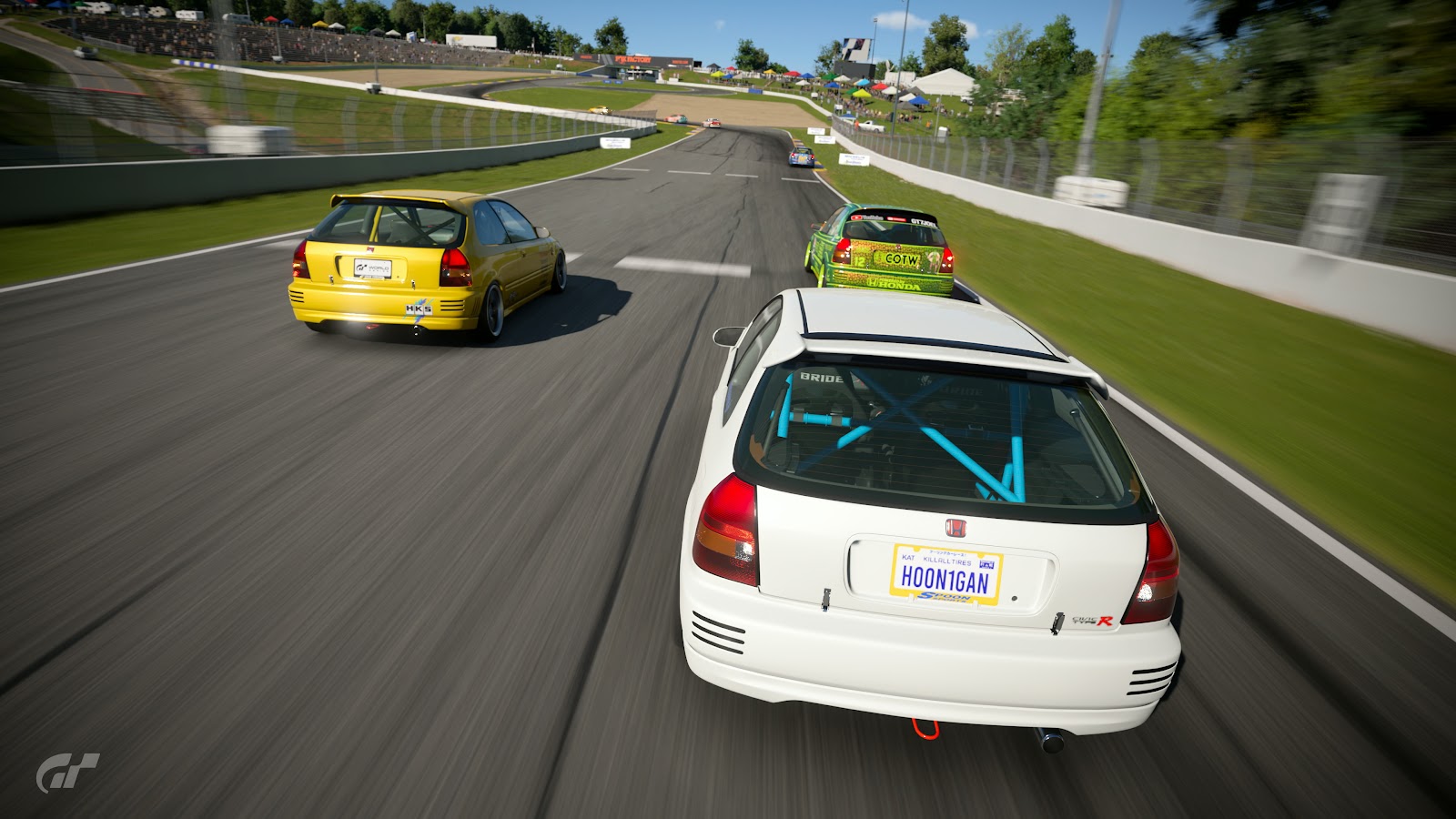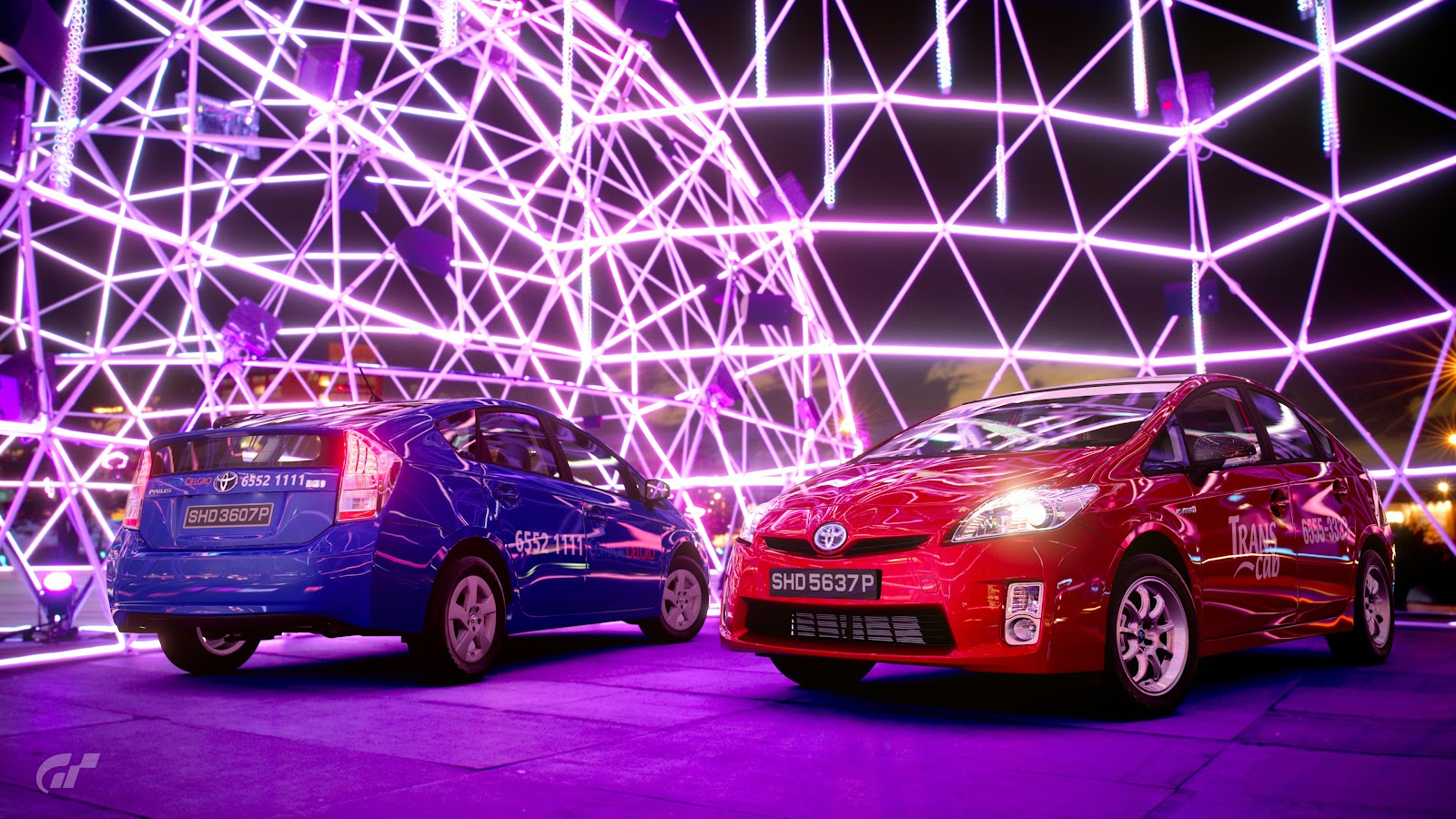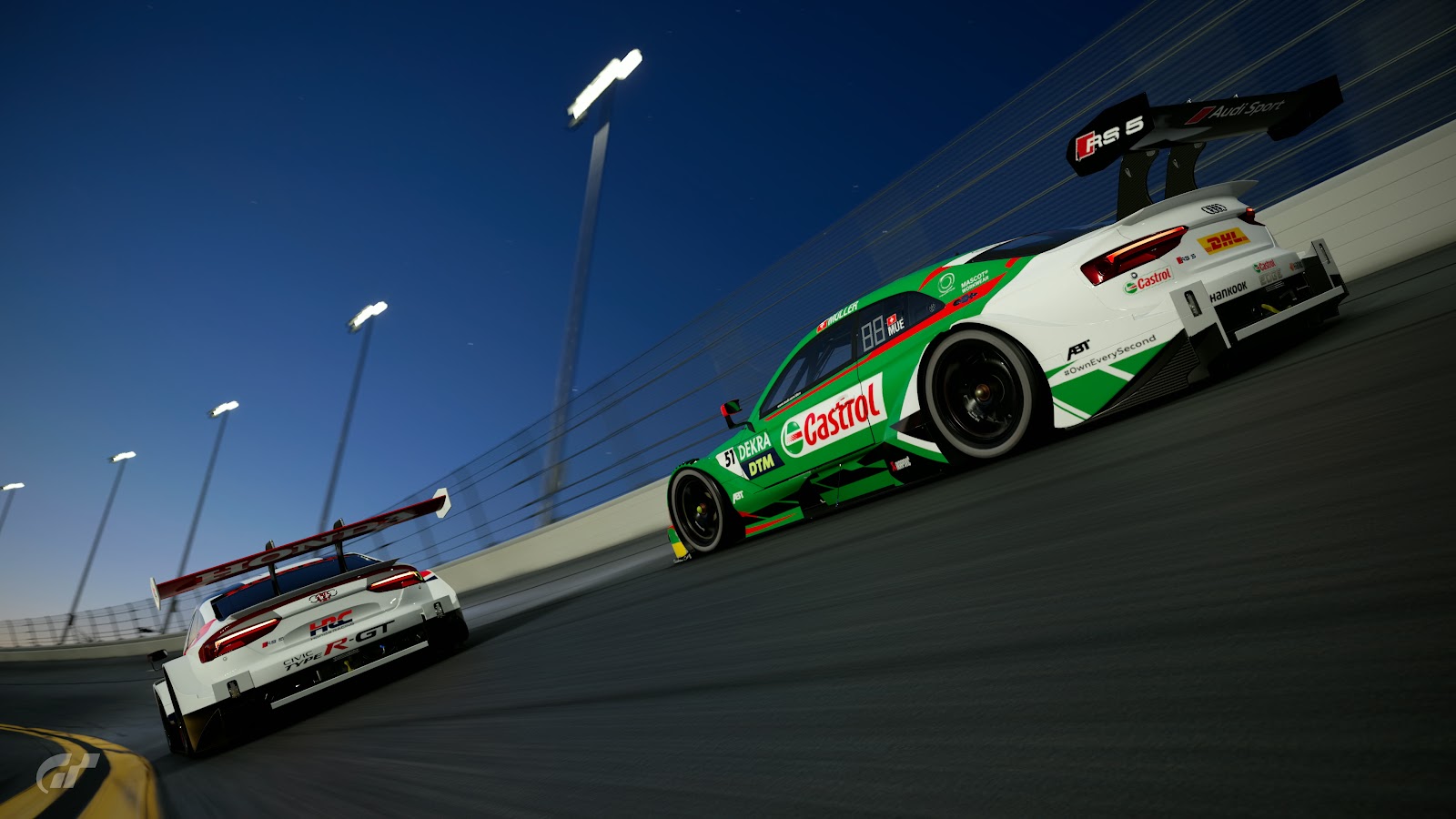The "Touring Car" suffix stuck onto the back of this peculiar example of a 1997 EK Civic Type R is not very telling of what it is, is it? It could mean that the car's a fire breathing, soulless battle machine bred for competition and born in the fires of conflict. Or it could mean that it's a date car to impress a partner and bring them to the beaches and mountains while going 5 over the speed limit just to show how much of a badass you are.
So which is it, exactly?
Having started its life as an expensive 110,000 Credit Racing Modification operation on a run off the mill 1997 EK generation Civic Type R, you might be forgiven for thinking that this Civic Touring Car is just a show over go kind of date car built, or rather, commissioned, by a slightly wealthy kid to impress others. However, look even just slightly deeper past the colourful skins of the EKTC and into the spec sheets, and you'll very quickly find that this expensive bit of kit carries with it some very real racing hardware. As with any racing car, power and mass are the two main factors that determine how fast they can go, with everything else being secondary at best, and with the EKTC, it has both of these all–governing stats firmly locked down in its iron hands: an astonishingly lightweight 845kg (1,863lbs) body propelled by a highly tuned NA 1.6L Inline 4 B16B engine now capable of a stonking 247HP (184kW) without the breathing aid of forced induction, and all that power goes through a proper 6 speed manual with gears somehow even shorter and closer together than those of the base car, to ensure that the peaky and soulful B16 engine can sing its cylinders out as often as possible.
The engine is easily the highlight of this car! I don't know what it is exactly about 90s engines, but they all seem to have a proper, mechanical wail to each of them, while each having their own distinct flair to set them apart from each other, all without the aid of speakers in the cabin. Equipped with a full control computer and Semi–Racing exhaust as standard, this engine is not just proper screamer, but it also in my opinion, makes this race prepped, road derived EKTC among some of the best and most distinctive sounding cars in the hall of fame like list that is Gran Turismo 7's car roster!
Now, if you've ever driven a stock EK Civic, you most likely know that the engine doesn't do much of anything if not near its 9,000rpm redline. However, I'm happy to report that the tuned engine in the EKTC has very solid shove from just 6,500rpm, which gives the EKTC a healthy pep in its step out of corners. Now, you might be thinking at this point, "that's still super high in the rev range; my daily can't even get to 6,5!" That may be true, but I also haven't told you the rev limit on the EKTC just yet... 9,800rpm. Yes, it's still a peaky engine. Yes, revving it out every gear is still a no brainer on the straights. But that also means that you have more than 3 thousand revs of very usable power to play with, and a close ratio box to keep the engine singing! In fact, the close ratios and versatile powerband often mean you'll have more than one correct gear to be in; I don't even use 2nd gear out of most tight corners, instead upshifting to 3rd just before the apex to power out of it, which feels much faster to me than banging the limiter in 2nd and then having to shift in the power zone.
And that's all I have to say about the best part of the car, this early into the review. You know what that means, don't you...?
The rest of the car feels like an incoherent mish mash of random parts that don't work together at all. The damn thing doesn't have a speedo or a fuel gauge, for starters. Peak power happens only at 8,8 in the rev range, but the shift light in the dash lights up at around 8,7, even before the engine makes peak power. Seriously, the car would've been much better off with its original dash. The brakes hardly work. The Sport Hard tyres it comes with are barely an upgrade from the stock car's Comfort Softs, and despite the unhealthy mass loss of the EKTC, the car still struggles obnoxiously for front grip in every section of every corner, from entry to exit. The car has excellent off centre steering response, but the EKTC can't follow up on this at all, very quickly hitting an almost literal wall in the steering lock travel as the tyres immediately start screaming and the wheel vibrates violently the moment you ask of it to bite into the apex of a corner. It feels almost as though the low slung car sitting a mere 80mm (3.15in) off the ground is hitting the end of the front springs' travel on every braking zone, and the car just can't put enough weight over the front tyres despite its lopsided 65:35 weight balance. As a result of all that, you'll have to brake entire rice fields before every corner to get the anorexic car to slow down in time, and then let off the brakes almost entirely for the front tyres to begrudgingly slip into any corner. It's a car that inspires a lot of doubt and fear in a racing scenario, as wanting to take a tighter inside line for an overtake counterproductively forces you to brake so much earlier for said corner, and for someone who's still struggling to learn how much space to leave a competitor in GT7's laggy lobbies, it's a very stressful chore at best to race this thing. And that's such a bummer, given how much I enjoyed the DC2 Integra R and hold it as a benchmark for every FF sports car out there. The EKTC really didn't live up to the expectations I had set for it, especially after all the rave reviews prior to the week's meets.
And so, I began to look for alternatives to the 115,600 Credit UCD exclusive EKTC. For less money, you could've had a freaking Amemiya tuned RX-7, an FR car with much more outright performance and an even higher skill and tuning ceiling, readily available to purchase from Brand Central at any time with a fresh odometer. If you're willing to spend about 10k Credits more, you can have a bona fide, from the ground up track toy in the Radical SR3 SL, which will effortlessly smoke the EKTC both in lap times and driving feel. Admittedly, both of those cars will have to go through some very uncomfortable detuning to fit into 550PP events, and so for those, I'd recommend the NA Roadster Touring Car, which is also readily available in Brand Central unlike the EKTC, but it's also substantially cheaper as well at 90,000 Credits. It's FR, has an instantaneous sequential gearbox, and lighter than the EKTC. You might be thinking I'm comparing a drunk bar brawler to a professional boxer at this point, but the fact of the matter is that the Roadster, in spite of all that, still sits some 20PP below the Civic. In the eyes of the game, if I'm being unfair in this comparison, it's to the Roadster's detriment rather than the Civic's!
Off the line, things immediately felt unfair. Even when starting near the back end of the grid, I was more than a second ahead by Turn 2 in both races I brought my Roadster against the Civics, thanks to the standing starts we use in our weekly lobbies. The underpowered Roadster hung with the Civics in the straights thanks to its sequential box, and out of corners, the nervous FR turd of a car couldn't much show why RWDs are superior, but it's in the entry to every corner where I felt like I was about to have a very ugly incident each time, simply because of how much more speed I could carry into apexes, where the Civics had to struggle with classic understeer. I was driving like utter bollocks the whole afternoon, and even I could snatch FLs away from Vic like it was my birthright, simply because I was in the much better car.
I have to say though, that neither car was good to drive. There's just something weird about these PS3 era fictional cars that just don't feel like they've been adapted well to the PS4 era games. Both cars feel like they ought to have more grip than they do, and when they let go, it happens with no warning and no transition; they just let go instantly. It feels like the suspension isn't set up or aligned properly. It's just a question of whether you want to see the wall coming to claim you or not when deciding between these two cars. If I had any other choice, there is no way in hell the EKTC would even be on my radar. It's hard to obtain, offers poor value for money, and drives terrible, and I'm yet to see what it can do that other cars can't. It's a hell of a looker that's a fantastic base for race and road liveries alike, and with a revised setup, I can see it being an absolute menace in the right hands. That is to say, if you really want the EKTC, you'll have to get very personal and involved with it to get the most out of it; it's not something you can just drive off a dealership with and expect it to serve you immediately.





































